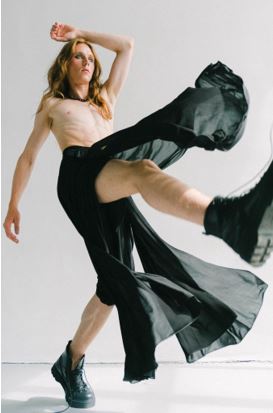
The femboy aesthetic has gained significant attention in recent years, particularly within internet style trends and the Gen Z community. It refers to men who embrace traditionally feminine behavior and stylings, such as skirts, dresses, makeup and nail polish, challenging societal norms surrounding gender and fashion. This article explores the origins of the femboy aesthetic, its cultural significance, and the ongoing conversation surrounding its portrayal by mainstream figures.
The Evolution of Gender-Fluid Style
To understand the rise of the femboy aesthetic, we must first recognize the historical context that shaped societal expectations regarding gender and fashion. For a long time, skirts and dresses were considered exclusively feminine attire, reinforcing a rigid system that limited women’s roles and discouraged their participation in certain activities. However, as underground and LGBTQ+ subcultures emerged in the late 20th century, conversations about gender identity expanded, and individuals began experimenting with clothing traditionally associated with the opposite sex.
These early discussions predominantly occurred within LGBTQ+ underground communities, where individuals explored the freedom of expressing themselves through fashion. However, in modern times, the femboy aesthetic has gained mainstream attention, often hailed as groundbreaking and a rejection of toxic masculinity. This raises questions about a conversation that has long existed within the LGBTQ+ community by straight cisgender men.
Redefining Masculinity
The popularity of the femboy aesthetic among straight cisgender men can be attributed, in part, to the evolving standards of masculinity. Traditionally, masculinity has been associated with physical strength, a commanding presence, and adherence to stereotypically masculine appearances. However, these notions are not static and evolve with societal changes. Men wearing traditionally feminine clothing, such as skirts, can sometimes be seen as an extension of their self-importance and a way to assert their masculinity in a non-conventional manner.
For example, artists like Young Thug, David Bowie, Adam Lambert, and Harry Styles have embraced the femboy aesthetic, garnering attention and praise for their fashion choices. While their adoption of feminine stylings may be seen as pushing boundaries, it is essential to consider whether they are truly contributing to the conversation surrounding gender fluidity or merely reinforcing an all-encompassing maleness.
The Influence of Mainstream Figures
When mainstream figures like Young Thug wear skirts or dresses, it can be seen as normalizing the femboy dress up aesthetic, making it more accessible and acceptable to a wider audience. This, in turn, can potentially open doors for others to explore and express their gender identity through fashion, embracing the femboy dress up style. However, it is crucial to recognize that this conversation has long been ongoing within the LGBTQ+ community, and the experiences and struggles of queer individuals should not be overshadowed by mainstream figures.
The femboy aesthetic should not be reduced to a mere fashion trend or a way for straight cisgender men to claim ownership of breaking gender boundaries. Instead, it should be celebrated as part of a broader movement towards inclusivity and acceptance of diverse gender expressions.
Breaking Gender Norms
The femboy aesthetic challenges traditional gender norms by embracing a more fluid approach to fashion. It allows individuals to express themselves authentically, regardless of societal expectations or stereotypes. By wearing traditionally feminine clothing, femboys are reclaiming fashion as a form of self-expression and dismantling the notion that certain styles are exclusively for one gender.
However, it is essential to acknowledge that the femboy aesthetic does not represent the entire spectrum of gender fluidity. It is just one facet of a much broader conversation surrounding gender and fashion. Other terms, such as genderqueer, non-binary, and androgyny, also play a significant role in challenging traditional notions of gender presentation.
Conclusion: Embracing Diversity and Inclusivity
The growing visibility of the femboy aesthetic highlights the importance of embracing diversity and inclusivity within the fashion industry and society as a whole. By celebrating a wider range of gender expressions and challenging rigid gender norms, we create a more inclusive environment where everyone feels seen, heard, and accepted.
The femboy dress up aesthetic represents a significant shift in societal attitudes towards gender and fashion. It challenges traditional norms, encourages self-expression, and celebrates diversity, particularly through the act of femboy dress up. However, it is crucial to recognize the historical context and ongoing conversations within the LGBTQ+ community that have paved the way for the mainstream acceptance of the femboy dress up aesthetic. By understanding the origins and cultural significance of this trend, we can foster a more inclusive and accepting society for all individuals, regardless of their gender expression.
Have you heard of a femboy aesthetic? Did you find this article helpful? We’d love to know what you think! Email us atglambmarketing@gmail.com or message us on our Facebook page. And be sure to check out more great tips and articles on our blog!
